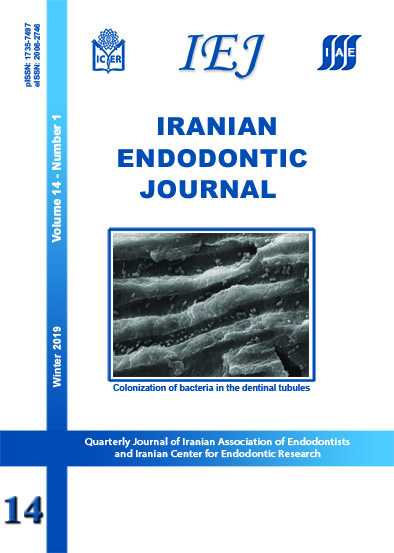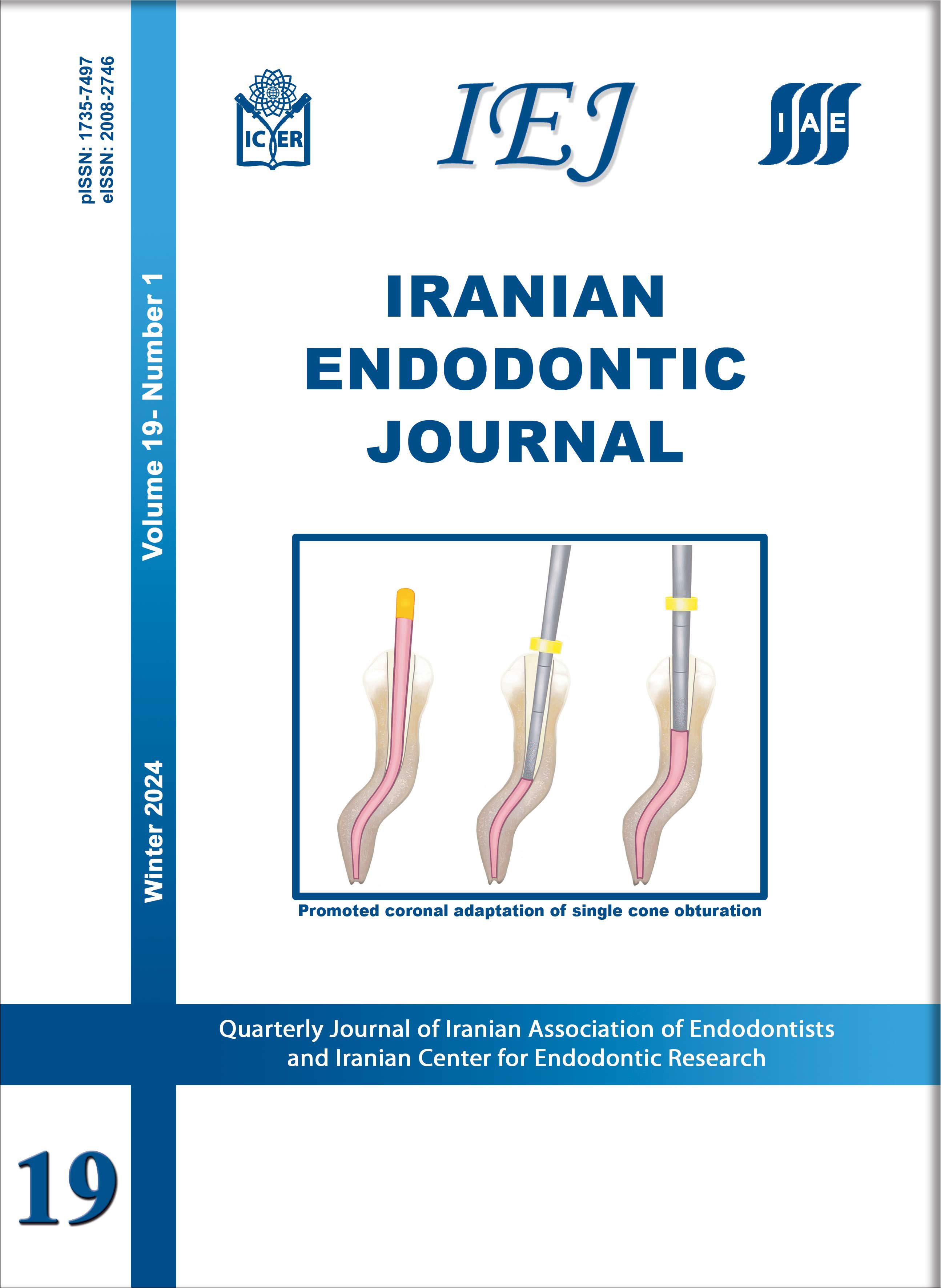Canal Transportation and Centering after Using PathFile and R-Pilot in Mesiobuccal Canals of Maxillary Molars Using Cone-Beam Computed Tomography
Iranian Endodontic Journal,
Vol. 14 No. 1 (2019),
20 January 2019
,
Page 35-39
https://doi.org/10.22037/iej.v14i1.21601
Abstract
Introduction: This study aimed to compare the changes in root canal anatomy following the use of PathFile and R-Pilot using cone-beam computed tomography (CBCT). Methods and Materials: In this in vitro, experimental study, 60 extracted maxillary first and second molars with 20 to 40° mesiobuccal root curvature, minimum of 19 mm of root length, no calcified root canals and no history of previous treatment were divided into two groups (n=30). CBCT scans were taken before and after the treatment, and sections at 1, 2 and 3 mm from the apex were compared. Pairwise comparisons were carried out using the Mann Whitney-U test. The centering ratio data were analyzed using the Chi-square test and Fisher’s exact test. All statistical analyses were carried out using Sigma Stat 4 software. Results: The difference between PathFile and R-Pilot in canal transportation in mesiodistal direction was significant at 1 and 2 mm from the apex (P<0.01). The R-Pilot file was significantly superior to PathFile in centering ability in mesiodistal direction at 1 mm from the apex (P<0.05). Canal transportation direction was towards the mesiolingual and distobuccal in R-Pilot and PathFile groups, respectively. Conclusion: Within the limitations of this study, the results showed that R-Pilot with reciprocal movement is a safe and easy to use instrument for creating a glide path.
Keywords: Canal Transportation; Cone-Beam Computed Tomography; Glide Path; PathFile; R-Pilot
How to Cite
- Abstract Viewed: 274 times
- PDF Downloaded: 530 times




